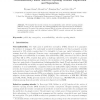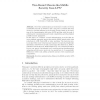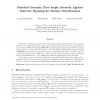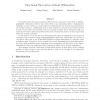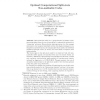ACNS
2015
Springer
8 years 7 months ago
2015
Springer
TCC
2016
Springer
8 years 7 months ago
2016
Springer
Secret-key authentication protocols have recently received a considerable amount of attention, and a long line of research has been devoted to devising efficient protocols with sec...
TCC
2016
Springer
8 years 7 months ago
2016
Springer
About three decades ago it was realized that implementing private channels between parties which can be adaptively corrupted requires an encryption scheme that is secure against s...
TCC
2016
Springer
8 years 7 months ago
2016
Springer
Since the seminal work of Garg et al. (FOCS’13) in which they proposed the first candidate construction for indistinguishability obfuscation (iO for short), iO has become a cent...
TCC
2016
Springer
8 years 7 months ago
2016
Springer
Previously known functional encryption (FE) schemes for general circuits relied on indistinguishability obfuscation, which in turn either relies on an exponential number of assump...
TCC
2016
Springer
8 years 7 months ago
2016
Springer
We show general transformations from subexponentially-secure approximate indistinguishability obfuscation (IO) where the obfuscated circuit agrees with the original circuit on a 1...
TCC
2016
Springer
8 years 7 months ago
2016
Springer
We consider randomized encodings (RE) that enable encoding a Turing machine Π and input x into its “randomized encoding” ˆΠ(x) in sublinear, or even polylogarithmic, time i...
TCC
2016
Springer
8 years 7 months ago
2016
Springer
Abstract. Non-malleable codes are a generalization of classical errorcorrecting codes where the act of “corrupting” a codeword is replaced by a “tampering” adversary. Non-m...
TCC
2016
Springer
8 years 7 months ago
2016
Springer
A major challenge in the study of cryptography is characterizing the necessary and sufficient assumptions required to carry out a given cryptographic task. The focus of this work ...
TCC
2016
Springer
8 years 7 months ago
2016
Springer
